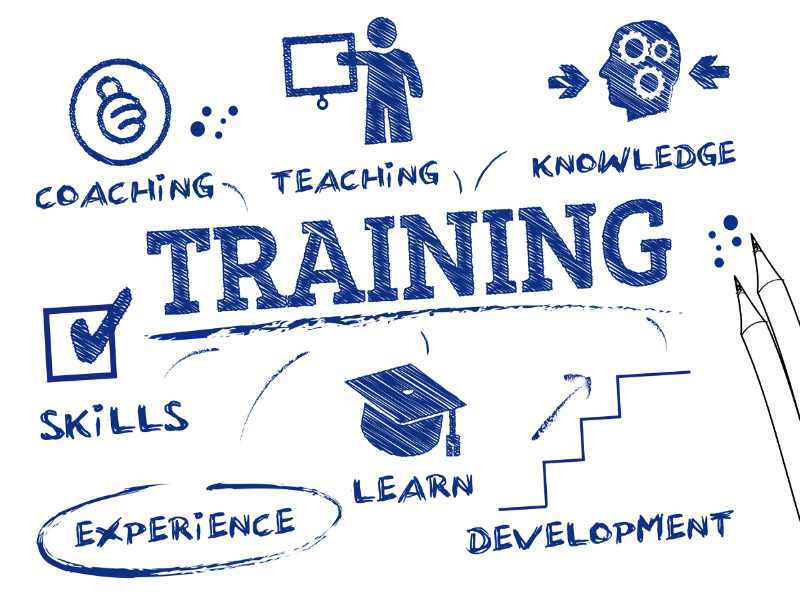Designing Effective Training Programs: Best Practices and Strategies
Introduction:
It is essential for both the growth of the organization and the development of the employees that effective training programs be developed. Enhancing skills, boosting performance, and contributing to overall success are all possible outcomes of a training program that is well-designed. In this article, we will discuss some of the most effective methods and procedures for developing training programs that actually produce the desired outcomes. Let’s get right to it:
- Assess Training Needs:
• To get started, you need pinpoint the precise set of skills and abilities that need to be improved upon.
• Carry out exhaustive needs assessments for training by means of questionnaires, interviews, and performance evaluations.
• In order to acquire a thorough understanding of training requirements, it is important to solicit the feedback of employees, managers, and subject matter experts. - Define Clear Objectives:
• Make sure that you have a crystal clear understanding of the learning goals and results that you wish to attain through the training program.
• Check to see that the goals are in line with those of the organization as a whole, and fill any skill gaps that have been found.
• In order to create a definite focal point for the training program, the objectives should be SMART, which stands for specified, measurable, attainable, relevant, and time-bound. - Customize Training Content:
• Tailor the content of the training to the particular requirements that your staff and the organization have.
• When determining how to promote engagement and maximize the retention of acquired knowledge, varied learning styles and preferences should be taken into consideration.
• Incorporate a variety of teaching strategies, including but not limited to presentations, interactive activities, practical exercises, and case studies. - Provide Engaging Learning Experiences:
• Ensure that the training program is not just interesting but also participatory and relevant to the participants’ tasks and responsibilities.
• Include different multimedia formats, games, and examples from real life to enhance the overall quality of the learning experience .
• In order to enhance the sharing of knowledge and its implementation, you should encourage active involvement, collaboration, and discussion. - Utilize Various Training Delivery Methods:
• Investigate a variety of approaches to the delivery of training in order to accommodate a wide variety of learners’ preferences and the limits imposed by logistical considerations.
• Give some thought to the possibility of participating in on-the-job training, virtual classrooms, e-learning modules, workshops held in person, and mentoring programs.
• If you want the training to be as effective as possible, mix and match the different delivery techniques based on the topic of the training and the audience you’re trying to reach. - Incorporate Continuous Evaluation and Feedback:
• Throughout the entirety of the training program, you should implement systems for continuous evaluation and feedback.
• Make use of pre-and post-tests to gauge the amount of knowledge gained and growth in skills.
• In order to discover areas for improvement, you should encourage participants to submit feedback on the training material, how it was delivered, and the experience as a whole. - Reinforce Learning with Follow-up Activities:
• Develop exercises to be completed after training that will help to consolidate and maintain the knowledge gained throughout and after the training program.
• You should provide your staff with job aids, resources, and tools that they can refer to after the training has been completed.
• Inspire managers to encourage and facilitate the implementation of newly gained abilities in the workplace by providing help and feedback. - Evaluate Training Program Effectiveness:
• The success of the training program should be evaluated on a regular basis so that its impact can be measured on both individual and organizational performance.
• To determine whether or not the program was successful, conduct an analysis of important measures such as staff performance, productivity, and engagement.
• Determine areas for improvement by using input from participants, performance evaluations, and the results of business activities, and then make any necessary improvements.
Conclusion:
For training programs to be effective, they need to be designed using a strategic approach that tackles specific skill gaps and is aligned with the goals of the organization. You can create impactful training programs that drive employee development and contribute to the success of your organization if you assess training needs, set clear objectives, customize the content, provide engaging learning experiences, utilize various delivery methods, incorporate continuous evaluation and feedback, reinforce learning, and evaluate the effectiveness of your program.
Call-to-action:
Visit the website for Human Tools here at our company for more in-depth thoughts and tools for developing useful training programs. Stay tuned for our daily blog postings to receive actionable advice, industry standards, and tactics for boosting employee skills and cultivating a culture of lifelong learning inside your company.


